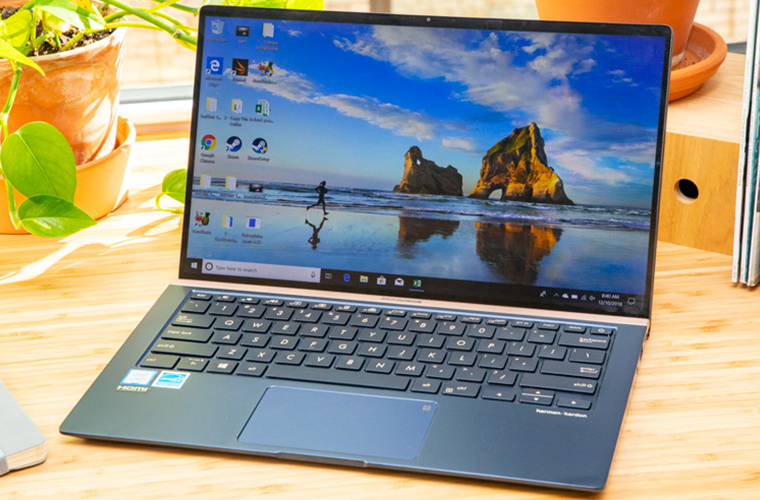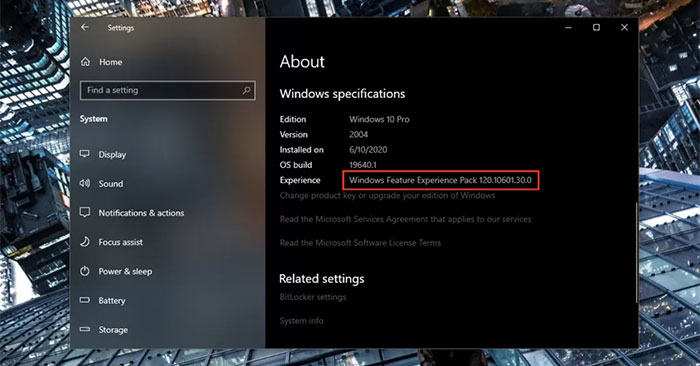Top 10 tips Windows 10 for you become a pro
Learning to be quicker and more productive on your laptop may be especially appealing with so many of us still working from home due to the coronavirus pandemic, or just spending more time on our laptops in general. Finding the secret Start menu and saving battery power with a simple trick are great ways to get more out of your machine.
Microsoft doesn't typically publicize its hidden features the way Apple does, which can make it more difficult to know how to get the most out of the machine you use day in and day out.

Even learning how to upgrade to Windows 10 for free can be tricky. You'll want to do this ASAP, by the way, since support for Windows 7 ended in January. So no matter which Microsoft, Dell, HP or other Windows 10 rig you have, these clever tips will help you stay organized and get more done. Plus, here's everything you need to know about the Windows 10 October 2020 update, and how to use the three best new Windows 10 features.
1. Open the 'secret' Start menu
You know that to get to the Start menu, you hit the Windows icon at the bottom left of the screen or on your keyboard. But Windows 10 includes a lesser-known second Start menu that makes accessing important features like the Command Prompt, the Control Panel and the Task Manager much easier. You can access it two different ways, either by pressing the Windows key + X, or right click the Windows icon/Start button.
2. Create an event without opening the Calendar app
Windows 10's latest update lets you quickly add events to your Microsoft calendar directly from your Taskbar -- without actually having to open the calendar at all. Here's how to do it:
Step 1. On your Taskbar, click the box with the time and date in it in the right corner.
Step 2. Click the date when you want to schedule an event.
Step 3. Enter the event name, time and location. (If you have multiple calendars, click the down arrow next to the event name field to choose the one you want to add it to.)
Step 4. Click save. The event should appear in your Calendar app across your devices.
3. Minimize all windows except the active one
If your desktop screen has gotten too crowded with open windows, you can quickly minimize them all except the one you are currently working in.
Just click the title bar of the window you want to remain open to select it. Then, hold the mouse down and move the window back and forth quickly -- shaking it, essentially. After a couple of quick shakes, all other open windows will minimize, leaving only the one you've shaken open. Neat, huh?
4. Take a screenshot
I know, it's a basic one -- but it's amazing how easy it is to forget how to take a screenshot on your laptop or desktop when you don't do it often.
There are at least eight different ways you can take a screenshot with Windows 10. If you want to capture and save a picture of your entire screen, the easiest way is to hit the Windows key + Print Screen key, and that picture will be saved to the Pictures > Screenshots folder.
To capture just one part of your screen, hit the Windows key + Shift + S to open a tool called Snip & Sketch, which allows you to click and drag to create a screenshot, which is saved to your Clipboard.
5. Open items on your Taskbar with keyboard shortcuts
If you've pinned programs to your Taskbar at the bottom of your screen to create a shortcut, you don't have to click the icons to open them. Instead, use the keyboard shortcut Windows key + [Number key], with the number key corresponding to the position of the program on the Taskbar. For example, Windows key + 2 will open the second item on the Taskbar.
This is especially useful if you're typing furiously and don't want to lift your fingers from the keyboard. It may feel more natural to reach for the Windows key.
6. Use background scrolling
With Windows 10, you can scroll up and down on any window -- even if it's not the one you're directly working in. This is a useful tool when you have a lot of windows open that you want to look through at the same time -- for example, if you want to open new sub-menu options in new windows to save you time clicking back and forward on the same page.
Try opening two programs -- say, an internet browser page and a notepad or Word document. Arrange both on the screen so you can see at least some of the text on each. While you are in one window, hover your mouse or use the touchpad to move to the second window, and scroll. Even though you aren't active in that window, it should allow you to move up and down the page.
The feature should be on by default, but if it isn't, go to Settings > Devices > Mouse, and toggle Scroll inactive windows when I hover over them to On. Then you can place your mouse over a window that's in the background and use the scroll wheel to scroll.
7. Figure out how much space apps are taking up
Computers start running slower as they grow short on space. One quick way to speed them up may be to get rid of apps that take up more space than they should, especially if you don't regularly use them.
To see how much space an app uses, navigate to Settings > System > Storage. Click on the drive you want to search (likely the local storage, "This PC"), and click Apps & games to see a list of apps installed on your machine and how much space they are taking up. You probably won't get rid of your browser, but you might find that a game you haven't played in years is some good dead weight to drop.
8. Get rid of ads in your Start menu
When you run Windows 10 with default settings, you may sometimes see apps on the right side of your Start menu. Microsoft calls them "suggestions," but they are actually ads for Windows Store apps you can buy.
To get rid of the ads in your Windows 10 Start menu, go to Settings > Personalization > Start. Toggle the setting called Show suggestions occasionally in Start to the off position.
9. Shut down background apps
Apps that run in the background can receive info, send notifications, and stay updated, even when you aren't using them -- which can be useful, but can also suck your battery and your data, if you're connecting via a mobile hotspot.
To control which apps are running in the background and save some battery power and data, go to Settings > Privacy > Background apps. To stop all apps from running in the background, toggle Let apps run in the background to Off. Or, you can choose which apps to run in the background individually by going down the list on the same page.
10. Show file extensions in File Explorer
Microsoft hides file extensions by default, which makes life difficult for people who need to look for specific types of files, like JPEGs and JPGs. To see file extensions in File Explorer, do the following:
Step 1. Go to the Search bar at the bottom of the screen, and type in File Explorer Options, and click it. (There are a number of other ways to get here too, but that one seems fastest.)
Step 2. In the window that pops up, click the View tab.
Step 3. Uncheck the box that says Hide extensions for known file types. Click Apply, and OK. You should now see file extensions for all files in the File Explorer.
You can also use the File Explorer Options menu to choose to show empty drives, hidden files and folders, and more.
You should read it
- Privacy control on Windows 10 computers with the following 5 tips
- 11 best tips to get started with Microsoft Loop
- 5 ways to speed up Windows 8
- Microsoft released a new Tips application for Windows 11, with more than 100 tips for using the operating system
- Trick to use Microsoft Edge on Windows 10 Mobile
- The trick to help Windows XP continue to be updated
- 10 effective and safe usage tips for Microsoft accounts
- Instructions for restoring Microsoft Edge on Windows 10
- 5 tips to help your computer stay 'healthy'
- Good tips and tricks in Windows 7 (Part 1)
- How to recover Windows 10 password easily
- Good tips and tricks in Windows 7 (Part 2)
May be interested

What is the 'Windows Feature Experience Pack' on Windows 10?

How to view upgrade history in Windows 10

How to create a shortcut Hyper-V Manager in Windows 10

Microsoft confirms Windows 10 20H2 has a blue screen error and restarts by itself

Windows Hello Face facial recognition technology on Windows 10

Microsoft releases update KB4580364, which resolves crashes on Windows 10






 Good tips and tricks in Windows 7 (Part 1)
Good tips and tricks in Windows 7 (Part 1) Good tips and tricks in Windows 7 (Part 2)
Good tips and tricks in Windows 7 (Part 2) 5 ways to speed up Windows 8
5 ways to speed up Windows 8 Some good tips for Windows 10 Technical Preview (Part 3)
Some good tips for Windows 10 Technical Preview (Part 3) 7 tips on OS X for Windows users
7 tips on OS X for Windows users These Windows 10 tips will help you be more productive
These Windows 10 tips will help you be more productive